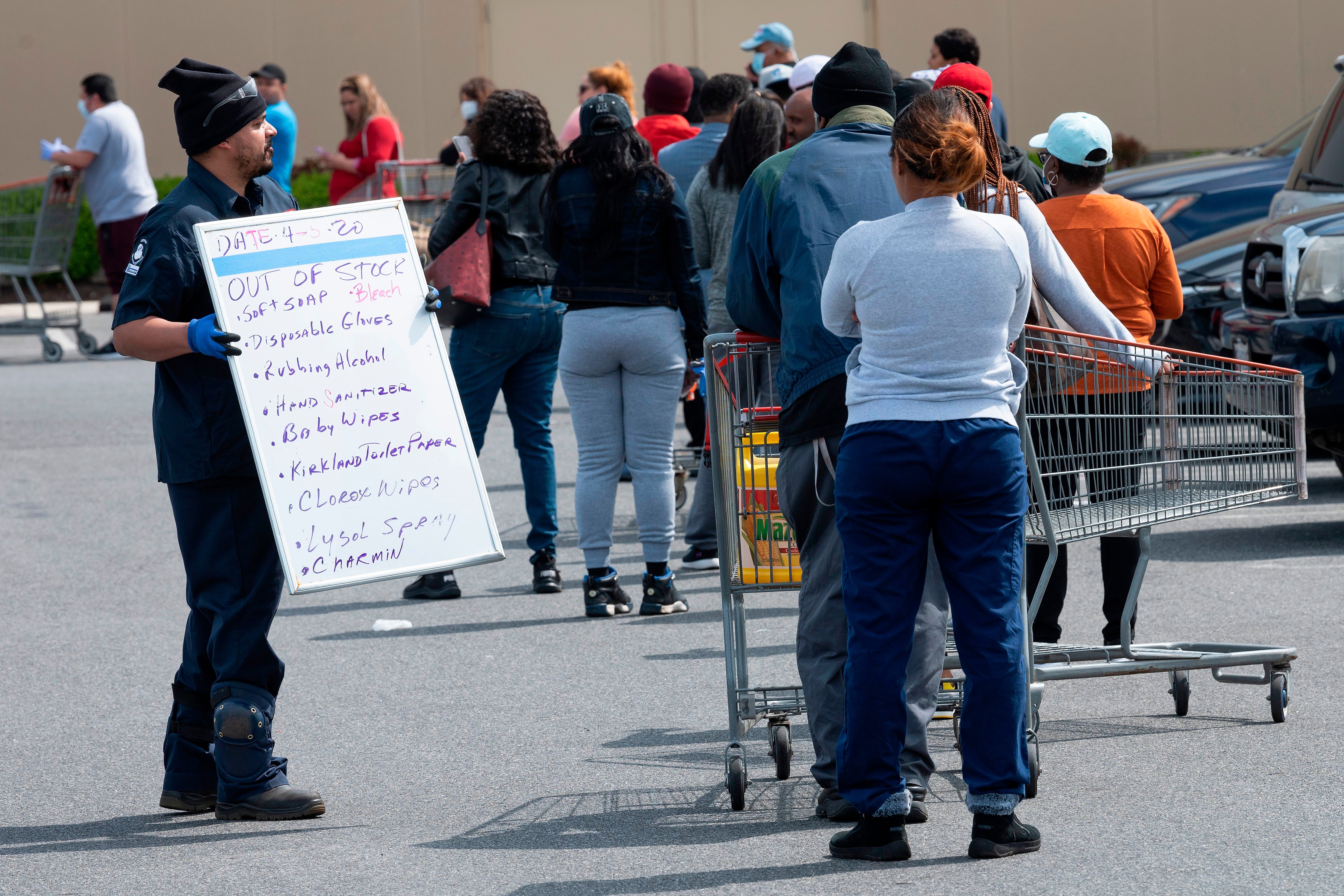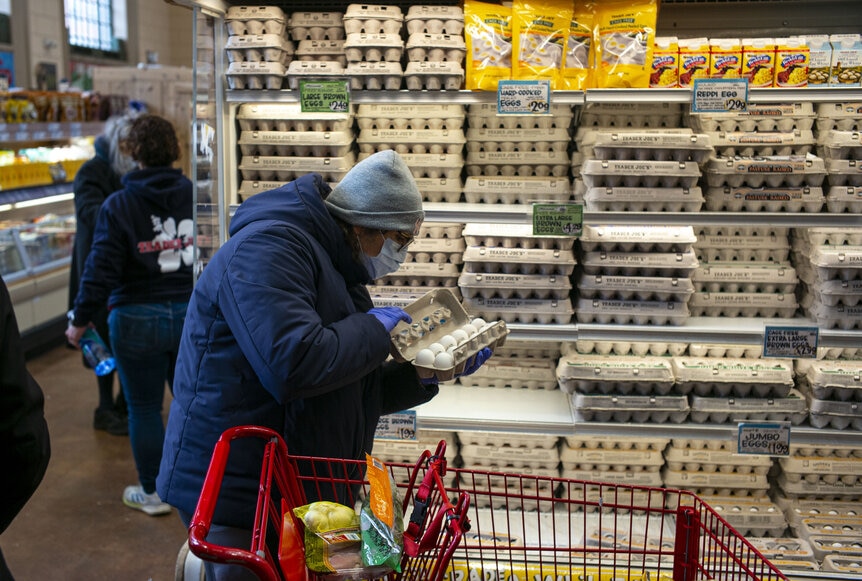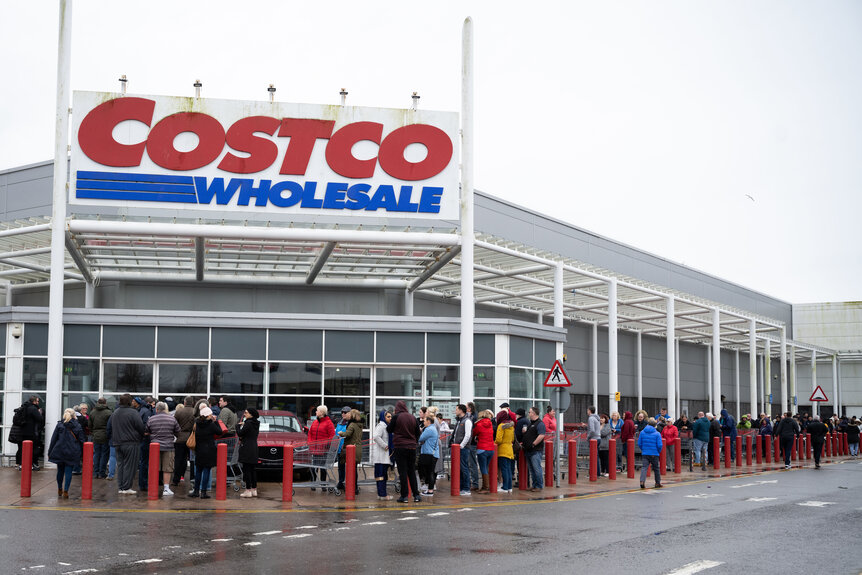Create a free profile to get unlimited access to exclusive videos, sweepstakes, and more!
Toy scalpers perfected the kind of price-gouging we now see for quarantine essentials

It’s constantly stated in the toy community that a toy is worth as much as you will pay for it. Well, what if it’s the last one on the shelves, and because of poor distribution or lack of supply, it’s the only time you might see that Red Hulk Target Exclusive Marvel Legends action figure? And right now, because of coronavirus-induced panic buying, grocery shelves are beginning to look like those old toy aisles stripped of rare collectibles.
Go to your local supermarket or pharmacy right now, take a spin through the shelves, and tell me what you see. That's right — a caved-in box of tampons, some fruit cocktail in heavy syrup, and that one flavor of chips no one likes. What do you not see? If your store is anything like the stores in my area, you might be missing eggs and (most infamously) paper products.
As a toy collector and toy journalist, I can't help but make some connections with what's been happening in my industry for, well, forever. That's not to equate the two phenomena — people clearing out shelves of toys is nowhere near as serious as people hoarding living essentials during a pandemic, but there is plenty of crossover.
Many of you by now have read The New York Times' article about a man in Tennessee named Matt Colvin, a buyer/reseller who garnered accidental infamy by buying up 17,700 bottles of hand sanitizer and other cleaning supplies. Colvin managed to sell 300 bottles on Amazon at marked-up prices before the company removed his listings and warned sellers that they would be suspended for price gouging. Reports from a follow-up article state Colvin has since donated the supplies.
"I’ve been buying and selling things for 10 years now. There’s been hot product after hot product,” Colvin says in the article, and while his actions in the lead-up to a pandemic rightfully made him the subject of outrage and hatred, he’s not wrong.
It made me think of my best friend and business partner Scott, a toy collector and toy seller since 1988, when he was 14. He is admittedly part of the problem when it comes to hoarding and scalping in the toy world, but he was willing to share some insight, much like the last time I picked his brain for an article about how the international scalping market has changed Japanese toy production.
Scott confirms that people buying up resources and selling them at a higher cost, as we’re seeing now, is not new in the toy-collecting community. For some time now, toy buyers (or scalpers, depending on your point of view) wait to get into toy stores at the crack of dawn to hunt for rare Hot Wheels or the newest (and hardest-to-find) action figure. Once said collector/scalper finds a store with the items they seek, they will buy not just one or two, but every single item, clearing the shelves.
Why is there this impulsive — if not compulsive — need to clear the shelves in one fell swoop? Because if the toy in question is hot or new, the after-market will pay more for it.
Point blank, the markup is huge.
“Back in the ‘90s, I was a vendor at a convention, and for whatever reason, everybody wanted this very specific DC Comics action figure of Robin,” Scott recalls. “I had two of them at my booth and they quickly sold. Word around the playground was that there were more figures over at the local Toys 'R' Us. I literally left the convention, went over to Toys 'R' Us, bought four of these Robin figures at retail price, went back to the show, and sold them for more than what I paid. I’d do the same thing during the holidays."
He continues: "I remember in 1995, Holiday Barbie was all the rage. I went to Toys 'R' Us the second it opened, cleared the shelves of the Barbie, bought a Mountain Dew, and sold the dolls on the roof of my car at a marked-up price. I’d sold all of the dolls before the store managers could ask me to leave. Besides, I’d bought a soda, so I was technically a customer.”
A few days later, once eBay hit the scene, a $10 toy could sell for $40 or more the exact day it was released. This absolutely transformed the toy market. Until that point, only older toys would be sold at two times the price (or more). Sure, Scott had sold that Holiday Barbie in the store parking lot, but he was one guy with a few dolls on his hood.
Now, a brand-new toy could be worth double the money as soon as you walked out of the store. It's basic supply and demand. Multiply that by thousands of toy scalpers at the same time on the same day, though, and you've got a problem.
“There is always a way to get around any rules and limits," Scott explains. "San Diego Comic-Con has been a mecca of exclusives for years now. I was there for the first real SDCC Exclusive: 2001’s He-Man by Mattel. People quickly figured out that if they couldn’t have more than one, they could stick their friends and children in the line just so they could buy more. This started it all at SDCC and caused people to be trampled on the second day they were sold.”
With that in mind, let’s tie this back to this very moment and what we're seeing with COVID-19 and people panic-buying toilet paper, hand sanitizer, and baby wipes.
The same guys who bought toys to flip saw an opportunity. They could now flip paper towels and 99-cent hand sanitizer for a much bigger (and easier) profit to the panic-stricken population. This is more than just a comparison between one occurrence in the toy-collecting world and what’s happening with people hoarding supplies during the COVID-19 outbreak — in some cases, these can literally be the same people who are hoarding toilet paper and cleaning supplies.
“Someone on my Facebook feed who sells toys stated that he is selling toilet paper and sanitizing products on Offer Up at gouging prices,” Scott confirms.
What were some of the first stores where we saw pictures and videos of people going nuts for household items? Places like Costco, of course, which provides ready-to-go, cheap items at wholesale. Why were there such crazy lines at Costco? Well, the items there cost the least and, for a while, had no limits on quantity. “This quickly changed and limits were applied, but that only meant sellers had to get their families involved to buy more,” Scott says, once again comparing the current situation to his time in the toy game.
“Literally today I was at Walmart, where toilet paper was limited to one per household,” Scott says. “And yet two ladies had carts full of it simply because they had multiple people to buy it.” Right now, the internet is filled with basic goods that shouldn't be hard to get, but because panic flippers are buying it all up and reselling for big profits, it tricks the general population into thinking it is a rare commodity. It's not — it's just unavailable right now, but it will be soon once supply outweighs the demand again.
In California, the anti-price-gouging statute applies immediately after the president of the United States, the governor of California, or city or county executive officer declares a state of emergency. Individuals, businesses, and other entities must comply with the statute. According to the government website, emergency supplies such as water, flashlights, radios, batteries, candles, blankets, soaps, diapers, toilet paper (you get the idea) cannot be price-gouged.
So, sure, buying an Exclusive Marvel Legends Red Hulk is not an essential supply for living. But you know what? Toilet paper is. Thus, when you buy up all of these critical supplies and resell them, you are a scalper who is denying people a necessary home good. This is not like scalping concert tickets, which were the first cases of crowdfunded supply and demand. And really, the social perspective of this hoarding changes with that same supply and demand.
Let’s circle back one more time to Colvin with his 17,700 bottles of hand sanitizer. People without the supplies, “the thing,” see the picture and they become angry, enraged even! However, if you saw this picture two months ago, before there was a shortage on (now-revered) supplies, you might consider him a crazy person. A lunatic Doomsday Prepper, right?
This honestly is the same thing with big-time toy sellers — if you see their filled-up garage or storage unit with piles and stacks of toys and items that you do not think are worth something, you call them crazy. And then, all of a sudden, there is that “rare" or "special" toy over the holidays that makes it into the media and is reported to be worth money. When that happens, this kind of toy collecting suddenly comes in handy.
Toilet paper and cleaning supplies are not that, and yes, we need them now. But hand sanitizer won’t be worth more in five years. It won’t be worth more in three months. This is a temporary impact to the market; supplies will readjust and very quickly the items that are difficult to get at this moment won’t be worth anything more than they originally were.
Unfortunately, the same can’t be said about those eight Mandalorian figures from the Star Wars Vintage Collection that you had to clear off the shelf and sell online at a markup. Just because you see in there doesn’t mean you are required to clear the shelves so that the next guy can’t have it.
But yo, if you have any of those figures left, hit your girl Loryn up. Because much like toilet paper and eggs, I can’t find my Mando — my essentials for keeping my heart happy — on the shelves, either.
















